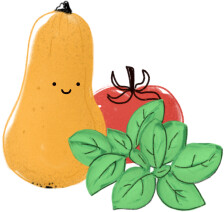Blondköpfchen

Variety
Blondköpfchen
Approved Data
created by steffen a. at 29.12.2022
Features
Color
Bathroom
Gelb
Location
Gewächshaus
Season Overview
Propagating
Planting
Harvest
J
F
M
A
M
J
J
A
S
O
N
D
Description
'Blondköpfchen' is a very prolific, orange-colored cherry tomato. It is undemanding and robust and forms many trusses with numerous small, sweet, mildly fruity cherry tomatoes well into September. They fruit reliably even in cooler temperatures and survive the heat of midsummer and the odd rain shower unscathed. The plants can grow up to 180 cm tall and this variety does not require pinching out.
Non hybrid
Not frost resistant
Growing tips
Tomatoes require a lot of light, warmth, water and nutrients. They are grown from seed on the windowsill from March. The seedlings should be planted deep, up to the first leaf base, so that the root system is enlarged by additional lateral roots. Unlike most other crops, tomatoes should always be planted in the same place. The plants also need wooden/corrugated wire rods or a trellis to which you regularly tie them. This is the only way they can support the weight of the fruit. You should regularly break out the side shoots that form in the leaf axils. This is because they do not bear fruit and take away the plant's energy to concentrate on producing lots of fruit. Under-sowing with low-growing plants is a good option.
Details
Light requirement
Sunny
Water requirement
Wet
Soil
Light (sandy)
Nutrient requirement
High
Plant distance
70 cm
Row spacing
100 cm
Seeding depth
1 cm
Companion Plants
Asparagus
Basil
Bean (Broad bean / Faba bean / Field bean)
Bean (Dwarf bean)
Bean (Runner bean)
Broccoli
Brussels sprouts
Cabbage (Cabbage)
Cabbage (Savoy cabbage)
Carrots
Cauliflower
Celery (Celeriac / Celery root)
Celery (Celery)
Chili
Chives
Collard greens (Kale)
Collard greens (Tuscan kale / Dinosaur kale / Palm tree kale)
Common marigold
Cress
Garlic
Kohlrabi / German turnip / Turnip cabbage
Leeks
Lettuce (Lettuce)
Mint
Napa cabbage / Chinese cabbage
Onion
Onion (Spring onion)
Oregano
Pak Choi
Parsley
Pepper / Paprika
Radish
Radishes
Spinach (Summer)
Antagonistic Plants
Diseases
Grey mold
Early blight of potato
Pests
Thrips
Aphids
Spider mites
White fly